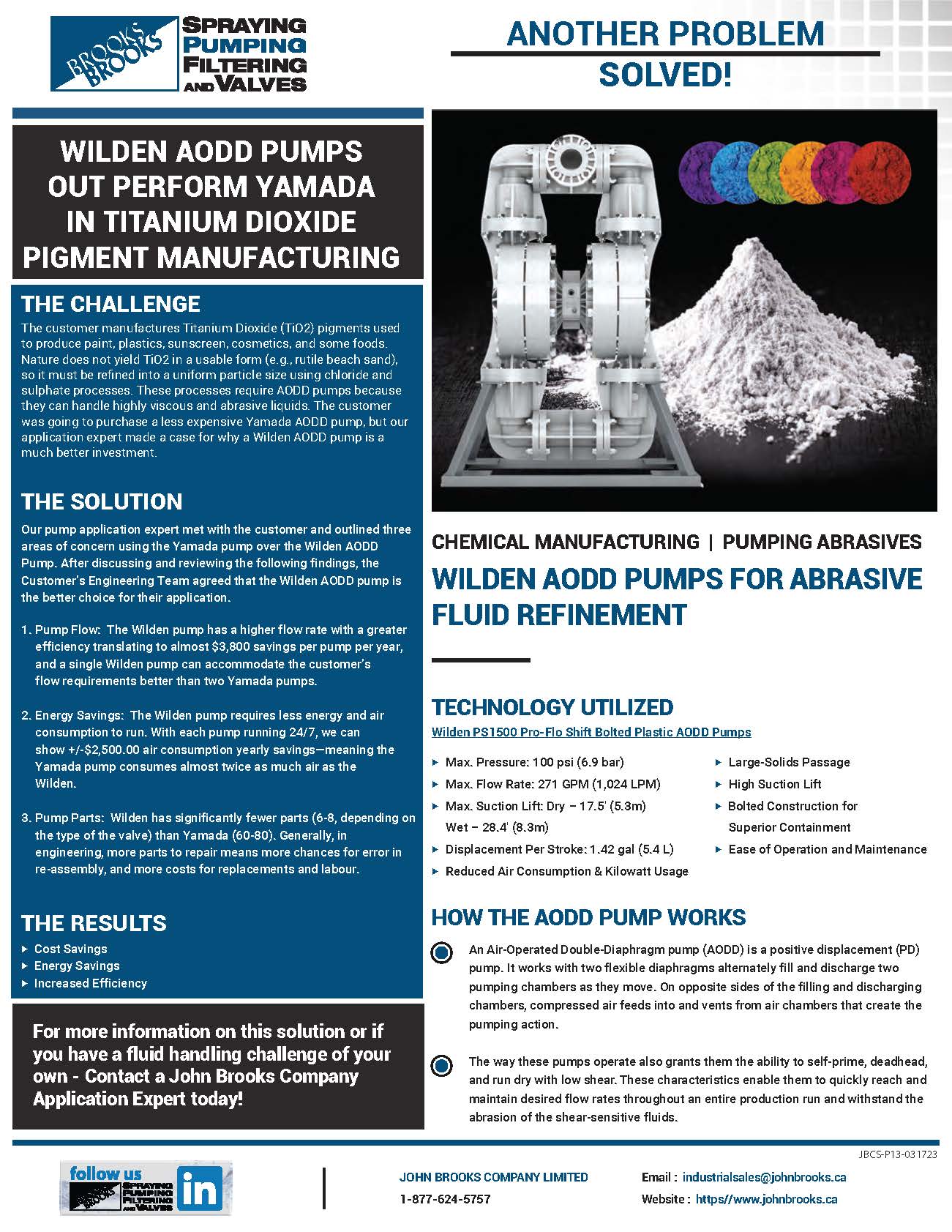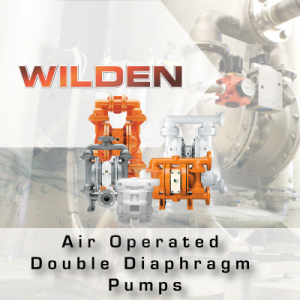How We Used Wilden AODD Pumps to Save a Customer Almost $4K per Pump per Year
The Challenge: Finding an Efficient, Long-Term Solution for Abrasive Fluid Refinement
The customer manufactures Titanium Dioxide (TiO2) pigments used in various industries, including paint, plastics, sunscreen, cosmetics, and some foods. Nature does not yield usable TiO2 (e.g., rutile beach sand), so it must be refined into a uniform particle size using chloride and sulphate processes. These processes require AODD pumps because they can handle highly viscous and abrasive liquids, which is where we come into the picture.
The customer was originally going to use a Yamada AODD pump, which would meet their requirements, but it wasn't the most efficient solution for them. We made a case for why a Wilden AODD pump (with a higher up-front cost) would be a better investment for them.
The Investigation: Trusting the Numbers to Tell the Story
Our pump application expert outlined three weak spots in the Yamada pump that the customer needed to be made aware of: pump flow, energy consumption, and costs for parts.
Wilden vs. Yamada Pump Flow
Wilden's pump flow curves were compared to Yamada's to determine how much energy the customer could save using a Wilden vs. Yamada pump.
The customer asked what would happen to the flow if the system pressure increased to 30 PSI. With the flow curves in hand, we discovered that the Yamada pump would deliver 150 GPM, while the Wilden pump with the same increased pressure would deliver 210 GPM. With the Wilden pump's significantly higher output, it could do the work of two Yamada pumps to meet the customer's desired flow requirements.
Wilden vs. Yamada Energy Savings
The two pumps' flow rates, head, air pressure, and SCFM requirements were compared with the costs per kilowatt-hour for the province ($0.04/kWh in Québec) to determine the long-term costs and savings of each unit. The Wilden pumps required less pressure (60 psi) and used half the SCFM (72) than the Yamada (75 psi and 140 SCFM), which translated to close to $3,766.71 savings per year per pump.
Wilden vs. Yamada Pump Parts
When the parts of the two pumps were compared, Wilden had significantly fewer parts (6-8, depending on the type of the valve) than Yamada (60-80). Generally, in engineering, more parts to repair mean more chances for error in re-assembly and more costs for replacements and labour.
The Result: Significant Increases in Efficiency & Cost Savings
So what did that mean for the customer? The comparison breaks down like this:
- The Wilden pump required less energy and air consumption to run. With each pump running 24/7, we could show +/-$2,500.00 air consumption yearly savings—meaning the Yamada pump would consume almost twice as much air as the Wilden.
- The Wilden pump had a higher flow rate with greater efficiency, translating to almost $3,800 in savings per pump per year. A Wilden pump could better accommodate the customer's flow requirements than two Yamada pumps.
- With the removable pilot sleeve and air valve assemblies, the Wilden pump had significantly fewer parts to replace and maintain.
After reviewing the case, the customer's engineering team was convinced that Wilden was the better choice.
AODD Pump Technology Used
The Wilden PS1500 Pro-Flo Shift Bolted Plastic AODD Pumps were used to solve the customer's application challenge.
Wilden PS1500 Pro-Flo Shift Bolted Plastic AODD Pump Specs.
- Pressure: 100 psi (6.9 bar)
- Flow Rate: 271 GPM (1,024 LPM)
- Suction Lift: Dry – 17.5′ (5.3m); Wet – 28.4′ (8.3m)
- Displacement Per Stroke: 1.42 gal (5.4 L)
- Reduced Air Consumption and Kilowatt Usage
- Bolted Construction for Superior Containment
- Large-Solids Passage
- High Suction Lift
- Ease of Operation and Maintenance
- Increased On/Off Reliability
- Longest Mean Time Between Repair (MTBR)
How the AODD Pump Works
An Air-Operated Double-Diaphragm pump (AODD) is a positive displacement (PD) pump. It works with two flexible diaphragms alternately fill and discharge two pumping chambers as they move. Compressed air feeds into vents from air chambers that create the pumping action on opposite sides of the filling and discharging chambers.
How these pumps operate also allows them to self-prime, deadhead, and run dry with low shear. These characteristics enable them to quickly reach and maintain desired flow rates throughout an entire production run and withstand the abrasion of the shear-sensitive fluids.


